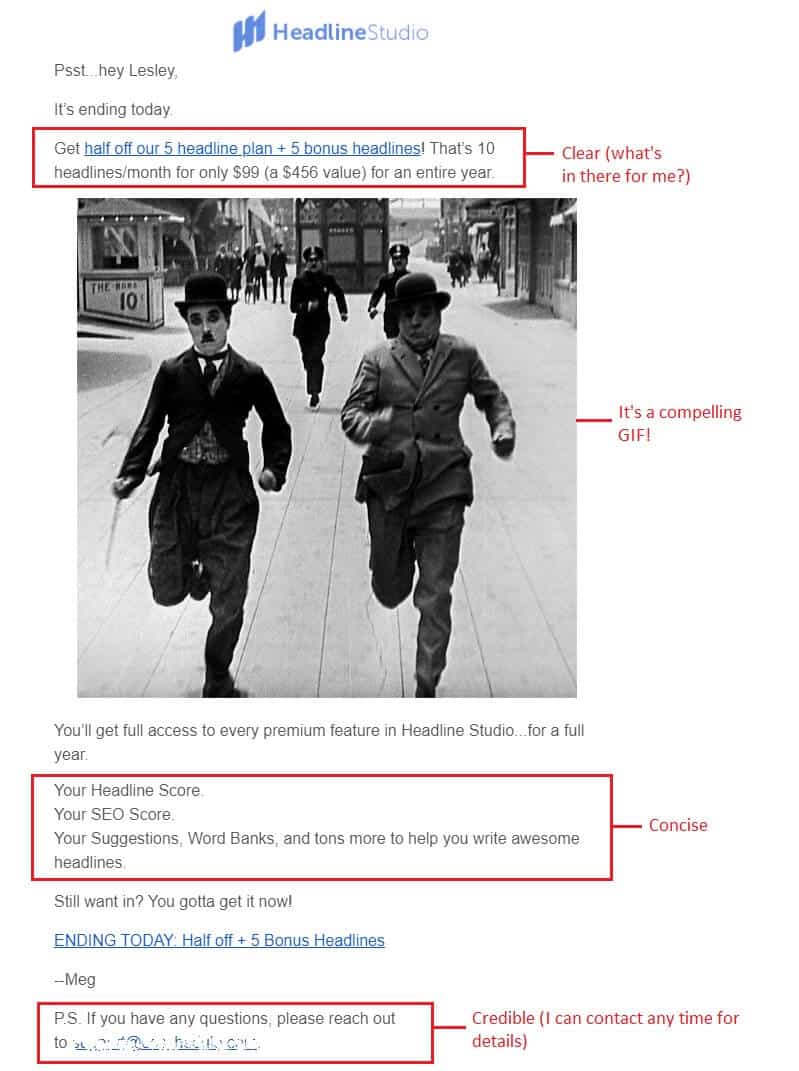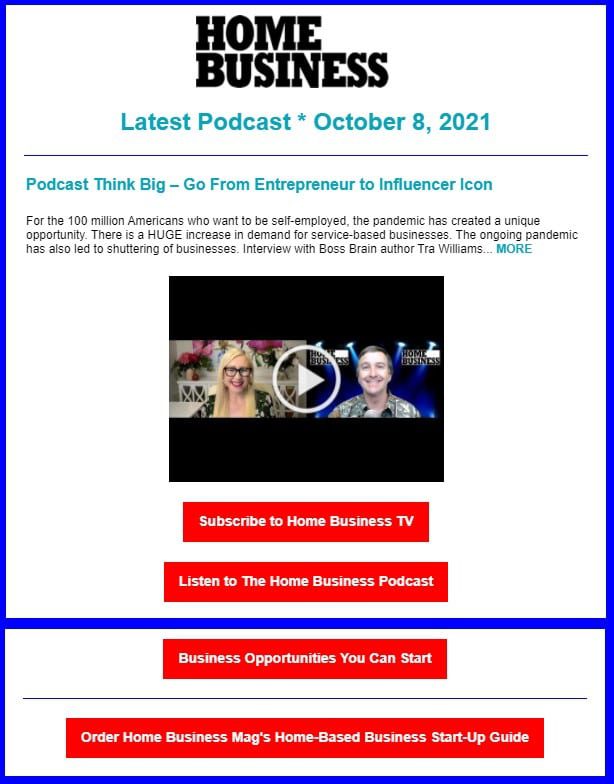
7 Click-Boosting Copywriting Formulas to Use in Your Emails
These tried-and-tested copywriting formulas will help you better engage your audience and boost conversions.
Legendary copywriter Joseph Sugarman defined copywriting like this:
“It’s a mental process… the successful execution of which reflects the total of all your experiences, your specific knowledge, and your ability to mentally process that information and transfer it to a sheet of paper for the purpose of selling a product or service.”
In plain English, copywriting is about mental selling: getting inside people’s heads to craft a powerful message that resonates with them, evokes emotions, and motivates them to take action.
Isn’t that what we want to achieve with marketing content of all types, including emails?
The copywriting formulas below describe how to do that to get results.
Top 7 copywriting formulas to try in emails
#1. Power words subject lines
Power words are lexical items that evoke emotions and responses from your audience. With their help, copywriters create persuasive and argumentative messages, communicating the desired reaction to prospects.
These words are “power” because they are unique, descriptive, and action-driven. Plus, they trigger emotional responses – either positive or negative – from the people who read or hear them.
Depending on what emotion you want to evoke from your audience, you need to choose your power words carefully. Particular lexical items in your writing can trigger fear, anger, curiosity, lust, safety, encouragement, authority, or trust.
Related: Conversion copywriter Joanna Wiebe, on how to write better copy
Here are some examples:

Why use power words in writing?
In today’s world of short attention spans and content shock, with inboxes stuffed and flooded, we all become super selective about the information we consume. Power words are your chance to stand out, grab user attention, and motivate them to click, thus raising open rates and conversions.
When sending emails to your list, add a powerful adjective or verb to your subject lines. Here are some from my inbox:

#2. BAF: before – after – bridge
This one’s simple, and many marketers use it when crafting blog posts, introductions, social media posts, or email messages.
- Before is for describing a problem your prospect has now.
- After is for describing a world where this problem doesn’t exist.
- Bridge is for telling a customer how to get there.
Brian Dean is a prominent ambassador of this approach in writing blog post intros. He calls it the APP method, where:
- A is for “aligning the problem”
- P is for “presenting your article as a solution”
- and the second P is for “preview” or “proof” (explaining why they should trust you).
Here’s Dean’s example:

And what about using this copywriting formula in emails? Here’s Brian again:

Related: Laura Belgray, on writing emails that convert
#3. Persuasive narrative
As Dean Mackenzie said, “You can segue from a story to the theme or offer you want to talk about, but it sets the scene nicely and practically sucks readers into the email.”
That’s the power of storytelling: persuading readers with a narrative.
The human brain retains information through stories and emotions, not statistics and facts. So, if you want to engage your audience with your content and the message you want to communicate, tell them a story they can relate to.
A narrative connects your business to your target audience. With a story – whether it’s a blog post, email, social media post, or video content – you demonstrate authenticity and allow people to see the world through your brand’s eyes. Having a second pair of eyes to review and approve content is also helpful for brainstorming new content ideas for your next email campaign.
So, how do you use this copywriting formula in emails and other types of content?
Three methods:
1) Hero – Goal – Conflict – Mentor – Moral
It comes from Copyblogger’s co-founder and copywriter Sonia Simone.
Let’s consider a specific example of this method. Say you send the following text to your email list or social media followers:
Need to know how active your subscribers have been in the past year? Add Activity Data to your list and send better targeted campaigns! ZeroBounce’s got your back: [link]
Who is who in this excerpt?
- Hero: your customer in need
- Goal: to solve a customer’s problem of gaining insights into their email lists
- Conflict: a hero wants to become better but doesn’t have instruments for that
- Mentor: your business
- Moral: don’t be afraid to trust a professional who knows how to help you
2) Star – Story – Solution
A star here can be your customer, product, service, or idea. You can introduce it at the same time as telling the story itself and explaining how the star wins in the end (solution).
Example:

3) Star – Chain – Hook
With your product or service being a star here, you lead readers through the chain of facts, benefits, and reasons to choose you over competitors. A hook in this copywriting formula is your call to action.

#4. The 4 C’s
This copywriting formula is a perfect fit for email content:
Keep it clear, concise, compelling, and credible for prospects to trust you.

#5. The 4 U’s
It seems ready-made for emails and social media messages when users don’t want to spend much time on long reads but still look for helpful content.
Here’s what the 4 U’s copywriting formula stands for:
- Useful content for the reader.
- Urgent so that the reader would check it right now.
- Unique, conveying the idea that the benefit of this content is peculiar to the reader.
- Ultra-specific with all of the above.
Here’s an example of such email I got recently:

#6. Neuro copywriting tricks
Neuro copywriting refers to a set of mental hacks you include in content to get inside people’s heads and compel them to act.
And no, it has nothing to do with manipulation. Well, maybe it has something to do with NLP communication techniques like anchoring and mirroring. It’s when you write the way your target audience speaks or try to represent things from their perspective.
Below are some copywriting formulas based on neuro copywriting tricks to consider.
Use numbers in email subject lines or content titles.
The trick is to include two numbers. Example: 5 ways we tried to boost conversions by 23%. Also, consider the psychology behind odd and even numbers: While even numbers look friendlier and make us feel relaxed, odd numbers are more thought-provoking.
Add beneficial adjectives to headlines.
They answer the “Why should I care?” question, explaining to readers why your content is worth their attention. An example from my inbox:

Use active verbs.
Support your copies with data.
Consider the above-mentioned power words.
Try negative meta language. These words appeal to fear (a dominant motivator for humans): fears of missing out, failure, or loss are a copywriter’s good friends if not overused in content.
Ask questions in heads, subheads, or throughout your copy. They make it clear what answers people get, motivating them to keep on reading.

#7. “So what?” + CTA
All courses, workshops or masterclasses on copywriting and web content creation teach this rule to attendees.
When writing, always keep the “So what?” question in mind. It’s what a user will ask while reading your work.
You write, “We’re the #1 in email marketing;” they say, “So what?”
You write, “Here are three new features for you;” they say, “So what?”
You write, “16% of emails land in spam every day,” and they again say, “So what?”
Why should they care? Your content should give them reasons to listen and trust you. For that, follow Google’s E-A-T guidelines:
- Write actionable content. What can users take from it and implement right after reading it?
- Prove its value. Consider your prospects’ needs and search intent; give them proof.
- Work on your brand reputation. Establish your business as an authority in the field. So, don’t simply write, “We’re the best;” try the “We’re the best because…” approach.
And now, for CTAs in emails.
People won’t do anything unless you ask.
So, do your best to write calls to action in every content asset you create, even if it’s not about promotions or sales. Informative newsletters, educational materials, blog articles, or short social media posts – make it straightforward for users.
What’s next after they’ve read your message?

But there’s a catch: What do you think is wrong with the above example?
Multiple CTAs in this newsletter!
Yes, it’s OK to use a few CTAs in your email if they lead a user to one page and action. But it’s not OK to overwhelm one content asset with CTAs of different goals: Users get lost and misunderstand what they need to do next.
Make it clear what exactly you want prospects to do. For that, consider email list segmentation and do your best to follow the “one email = one CTA” rule. Proper CTAs can help you drive engagement, website traffic, and conversions.
Ready to craft emails with all these copywriting formulas at hand?
The words you choose and how you use them in emails or other types of marketing copy significantly impact people’s engagement and willingness to deal with you. Professional copywriters have long known that and derived a bunch of actionable copywriting formulas. They help you influence your audience, persuade them, and motivate them to pursue a specific action.
The copywriting formulas in this article are all proven and trustworthy tactics to start mastering. If you want to craft engaging and convertible texts for your email marketing campaign, feel free to try any of them. But remember to test your emails first to ensure they make it to user inboxes.
Author: Lesley Vos is a professional copywriter and guest contributor, currently blogging at Bid4Papers, a platform that helps students and authors with their writing. Specializing in data research, web text writing, and content promotion, she is in love with words, non-fiction literature, and jazz.
Table of Contents
- Top 7 copywriting formulas to try in emails
- #1. Power words subject lines
- #2. BAF: before – after – bridge
- #3. Persuasive narrative
- 1) Hero – Goal – Conflict – Mentor – Moral
- 2) Star – Story – Solution
- 3) Star – Chain – Hook
- #4. The 4 C's
- #5. The 4 U's
- #6. Neuro copywriting tricks
- #7. "So what?" + CTA
- Ready to craft emails with all these copywriting formulas at hand?






